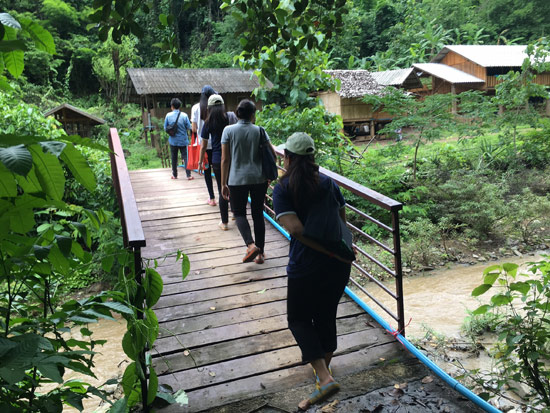According to the United States Centers for Disease Control, nearly half of the world’s population live in areas at risk of Malaria1. The World Health Organization (WHO) reports that in 2019 alone, an estimated 228 million malaria cases worldwide have been recorded2. Since its discovery in the early 1890s, Malaria remains a significant public health concern together with HIV/AIDS, tuberculosis, and other neglected diseases making its way as part of Goal 3 Target 3.3 of the Sustainable Development Goals (SDGs)3. But unlike other conditions, malaria control enters a new light as WHO reports significant accomplishments of countries towards its elimination.
During the celebration of World Malaria Day last April 25, 2021, the World Health Organization announces that 25 countries are nearing eliminating this mosquito-borne disease in the next five years. The WHO reports that malaria cases in countries in the Greater Mekong Basin region have significantly dropped by 97 percent in a 20-year gap (2000 to 2020)4. Thailand, more importantly, becomes noteworthy amongst countries in the Mekong basin region as it demonstrates aggressive steps in meeting its malaria elimination targets. Aside from laying the foundation of malaria control in its country strategy, Thailand proactively recorded a considerable number of annual caseloads proving that its targets are within reach. The work of the Ministry of Public Health’s Division of Vector-Borne Diseases, more so, confirmed that its dedicated national malaria program reporting and response achieved meaningful results. Today, malaria cases are primarily contained in border areas of Cambodia, Myanmar, and Malaysia.
In addition, despite multi-drug resistance and the challenges imposed by stringent community quarantine measures during the COVID-19 pandemic, Thailand’s robust surveillance system, known as the 1-3-7 strategy, informed real-time notification, investigation, and response5. Thailand’s 1-3-7 strategy describes that case notification shall happen in one (1) day, succeeding case investigation within three (3) days, and actional response within seven (7) days. Under the Malaria Elimination Strategy, Thailand is committed to implement 1-3-7 as the required time frame to control malaria spread throughout the country. It heavily integrates with various strategies upon case detection, insecticide bed net distribution, and indoor residual spraying. As the country faces multi-drug resistance, it is paramount that effective response is ensured, especially on providing complement treatments and patient follow-ups.
This is made even possible using information and communication technologies that linked malaria surveillance systems. Reports, which take months to be submitted at the central level, took only a day through the malaria online information system. Interactive dashboards with georeferenced information are also made available, making response and monitoring activities up to date6. Data is accessible through smartphones and other mobile devices. Information in the system integrates vital activities such as case detection, indoor spraying, and bednet distribution7.
According to the Ministry of Public Health, Thailand moved from control to elimination when from 2010-2016, it saw a considerable decline in cases from 64,957 reported cases in 2010 to 17, 153 cases in 2016 with a morbidity rate of 0.38/1000. With the issuance of its revitalized strategy through the National Malaria Elimination Strategy 2016-2024, Thailand proves significant progress in eliminating this disease in the country. During these times, rapid progress has been made in reducing active foci transmission from 1542 in 2015 to only 415 in early 2018. Even so, total malaria cases were down to 13,974 in 2017. The transmission was contained in few villages on the border of Myanmar, Cambodia, and Malaysia8.
Accurate enough, quality data for decision-making is vital for public health response. Thailand’s latest addition to the E-2025, a global initiative to end Malaria in 25 countries, presents new challenges in halting malaria transmission in the time of the pandemic. New roles and policies are expected to emerge, and many opportunities could be leveraged to better respond to the burden of this disease. At the heart of this are the local and provincial health officers. They are critical in assuring malaria data are of quality. Building them requires long-term capacity-building interventions that address everyday reporting challenges to meet Thailand’s last frontier in malaria elimination.
2https://www.who.int/news-room/fact-sheets/detail/malaria
4http://apps.who.int/iris/bitstream/handle/10665/340881/9789240024359-eng.pdf?sequence=1&isAllowed=y
5https://healthpolicy-watch.news/85289-2/
7https://malariajournal.biomedcentral.com/articles/10.1186/s12936-021-03740-z
8Sudathip, P, Kitchakarn, S., Thimasarn, K. (2019). The evolution of the Malaria clinic: The cornerstone of Malaria elimination in Thailand. Tropical Medicine and Infectious Disease



